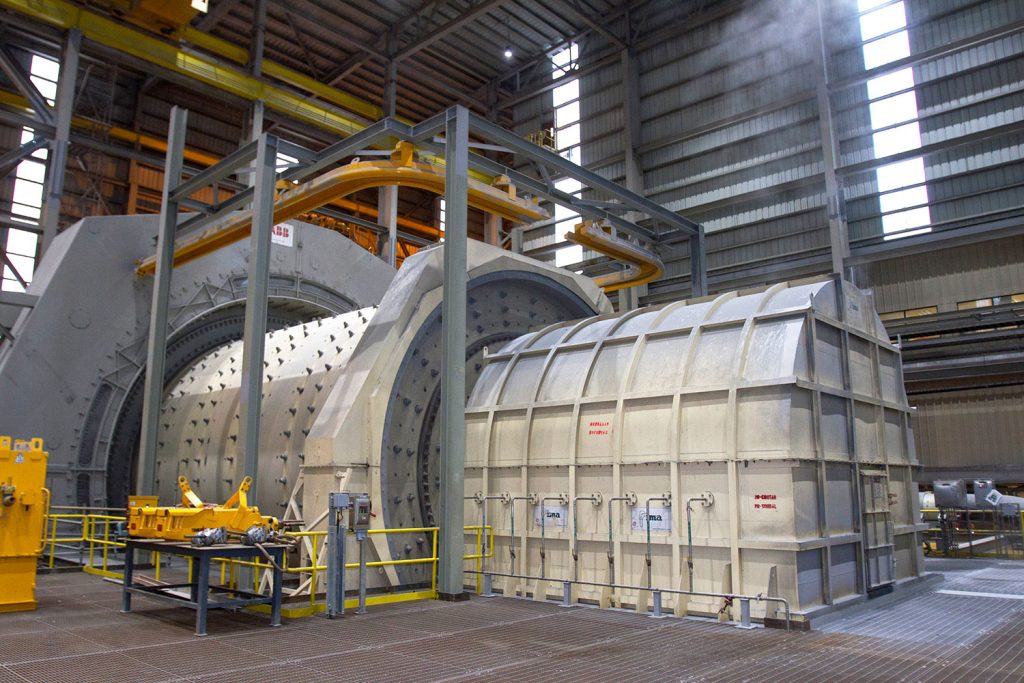Pueblo Viejo’s semi-autogenous grinding (SAG) mill has hit record throughput levels over the past four months following the implementation of a digital solution last year. The project is the result of a partnership between Pueblo Viejo, the Barrick Digital team, and an outside supplier. The SAG mill at the site grinds the gold ore which is then sent to the autoclave for further processing.
The impact of steel balls against ore particles is an efficient grinding method, but it can also wear the liner that protects the cylinder. This can in turn increase maintenance and energy costs. Until very recently, the system used to measure liner impacts was difficult to calibrate and generally unreliable. “Historically, impact measurements in SAG mills have been based on human ear and other methods that largely rely on the skill and experience of the person who calibrated the measurement system,” says Rolando Rodriguez, Metallurgist at Pueblo Viejo. “They also tend to be subjective, because different people may attribute a different phenomenon to the same sound.”
A solution to this long-standing problem arrived at Pueblo Viejo when Tara Rana, Project Manager with the Digital team, introduced Pueblo Viejo colleagues to Karl Gugel from Digital Control Lab – a Florida-based company that develops tools to track and detect the wear of ball mills used in the mining and cement industries. Digital Control Lab’s solution – dubbed “MillSlicer” – uses acoustic and accelerometer sensors to capture data about mineral input and output at the mill, as well as vibrations from the mill’s shell and other key components. A system combines this data to estimate the impact of the steel balls on the liner and infer conditions inside the mill. Based on this information, mill operators can adjust operational parameters – such as mineral feed and rotational speed – to optimise mill performance, and prevent the liner’s wear.
A team of seven people from Pueblo Viejo’s Process, Metallurgy and Instrumentation departments launched a three-month pilot in partnership with the Barrick Digital team to test the tool last autumn. “The results have exceeded expectations. The mill hit a throughput record in September, October and December, operating 24 hours, seven days a week, with no work stoppages from mill overloads. In the future, there are plans to incorporate the MillSlicer data in advanced process control strategies to optimise mill production.”
“The whole purpose of our digital transformation journey is to harness the power of technology to drive improvements across the organisation, and collaboration is key to achieve this goal,” says Rana. “This project at Pueblo Viejo is a great example of that. I think everyone in the implementation team is very happy with the results.”











